
There are few things in life better than brawlin' hillbillies.




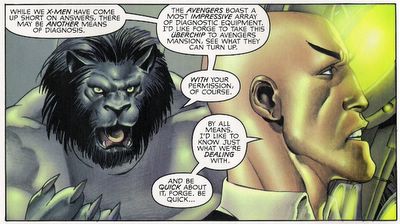
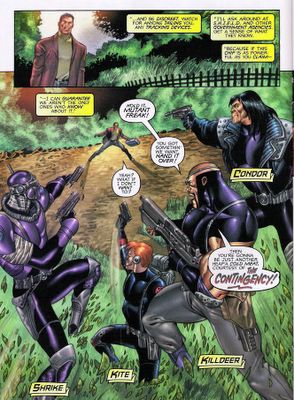
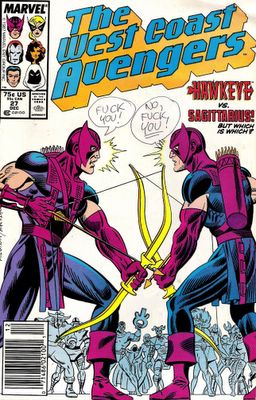

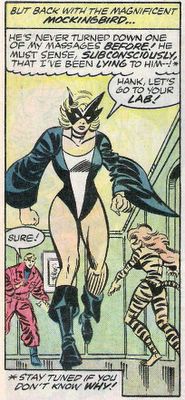


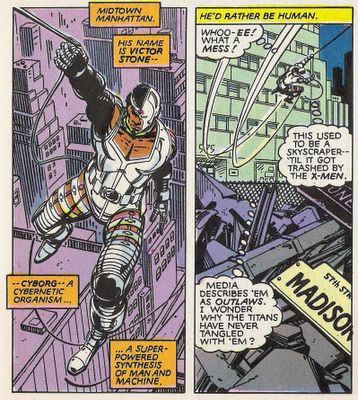
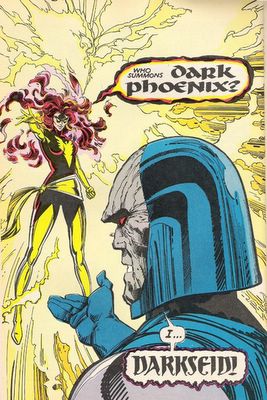

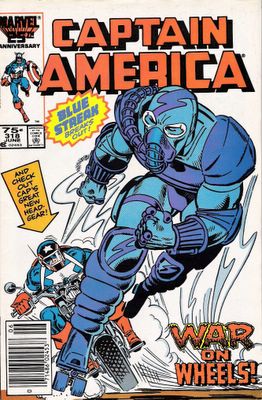

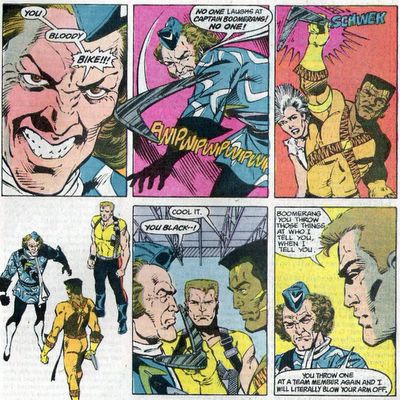










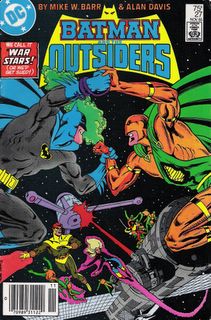
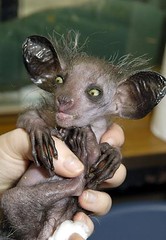
This has nothing to do with comics, but holy shit! Look at the freaky-ass monkey!
This is a baby Aye-Aye Monkey, a type of lemur native to Madagascar. They're endangered due to habitat loss and because some locals believe that Aye-Ayes are harbingers of death, like little monkey banshees - so naturally they kill the little guys.
It looks like an evil little Gelfling to me.
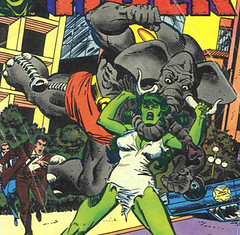


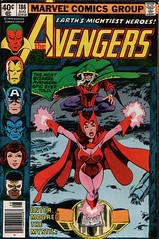
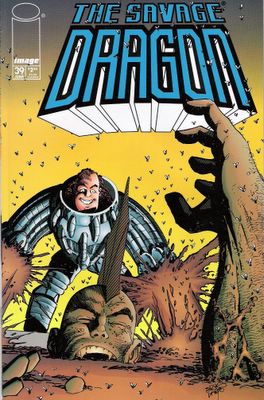

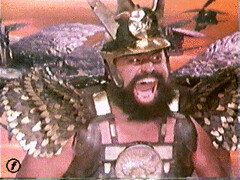
Quick, who’s lamer than Aquaman? Time’s up. Answer: Hawkman.
I’m just kidding, I kind of like Hawkman. He’s very similar to Aquaman in that he’s sort of a one-trick pony – Aquaman swims, Hawkman flies. And hits people with a mace. That’s about it.
Hawkman was created in 1939 by the prolific Gardner Fox, first appearing in Flash Comics in 1940, then in All-Star Comics. He was a founding member of the Justice Society of America and was popular back in the day. Tastes change. He has appeared in multiple solo series from the Silver Age on, and has the most fucked up convoluted history of any comic book character.
The original Hawkman was blond millionaire playboy Carter Hall, who collects antiquities and wears Hugh Hefner outfits. He discovers he’s the reincarnation of an Egyptian prince named Khufu (gesundheit) who was murdered, and that he had a lady love back in the day named Shiera. Wouldn’t you know it, a foxy chick named Shiera comes into his life, as well as a villain who was the reincarnation of the dude that murdered him. Following me? Carter straps on wings and hawk gear and takes to the air using anti-gravity belts made of “nth metal.” Carter avenges the murder of his former self by whacking the villain with a big mace -- "With a weapon of the past, I shall defeat an evil of the present" – and began his crimefighting career as Hawkman. Shiera joins him later as Hawkgirl. They clobber evil and join the JSA.
The old Hawkman comics were very cool – they had an Edgar Rice Burroughs vibe to them and were illustrated well. But much like Aquaman, the character then suffered through a number of comic series’ which were started then cancelled, and each new series was a re-imagining of Hawkman that didn’t reconcile with the past. In 1961 Hawkman and Hawkgirl reappeared in The Brave and The Bold, but now they were alien cops from the utopian planet Thanagar named Katar Hol and Shayera Thal, a husband and wife crime-fighting team. Huh?
Since this was before the continuity altering Crisis on Infinite Earths, DC solved the inconsistency by putting the two different Hawkmans on different Earths - Katar Hol and Shayera Thal on Earth-1 and Carter & Shiera Hall on Earth-2. Follow? After Crisis, things got confusing.
Then came 1989’s Hawkworld, by writer/artist Tim Truman, who reimagined utopian Thanagar as a planet of floating cities ruled by the fascist Wingmen police, where the rich elite live on the backs of the oppressed Downsiders. Right wing (get it?) cop Katar Hol has an attack of conscience and defects from Thanagar with his partner Shayera, seeking political asylum on Earth. This three-issue mini-series led into the Hawkworld ongoing series, which was an interesting political fable about a former fascist who comes around to the idea of sentient rights and is profoundly affected by the US Constitution. This series features the first interpretation of Hawkgirl as a ball-breaking warrior chick featured in the Justice League cartoons. The series slowly went downhill and was eventually cancelled.
This version of Hawkman didn’t fit with the Silver Age history of the character. Truman originally wrote Hawkworld imagining that this was the back story of Hawkman before he joined the Justice League, but editor Mike Carlin wanted to set the ongoing Hawkworld series in modern times. What about all those JLA heroes who adventured with Hawkman in the JLA? Were the Hawkworld Katar Hol and the Silver Age Katar Hol even the same guy?
There was another short-lived Hawkman series in 1986-87, which screwed up continuity even further and confused geeks everywhere. Hawkman was now an avatar of the “hawk spirit” or some shit, and at some point Katar Hol and Carter Hall were mystically fused together to fight the evil Hawkgod. What happened to alien Hawkman? No fucking clue.
Here’s DC editor Mike Carlin:
"Honestly, Hawkman is the character we have collectively done the most disservice to. Too many completely new starts just set the continuity on a spiraling tailspin. There was a wave of ‘rebooting’ that DC went through in the late eighties, and Hawkman unfortunately had the most ‘rebooting’ done with his character and mythos, so much that we just decided to give the character a rest, and to let the ‘radioactivity’ die down."
Hawkman was stuck in another dimension for a while, until writers Geoff Johns and David Goyer resurrected him in Golden Age form and he joined the JSA. In 2002, DC published yet another Hawkman series, written by Johns. I’m not totally 100% clear on what the character’s origin is – and I don’t think I’m alone.
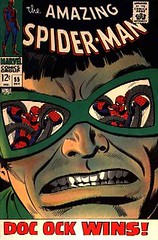
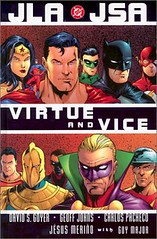
This is a deluxe hardback treatment of a time-honored DC tradition: the annual meeting of the Justice League of America* and the Justice Society of America. Back in pre-Crisis days the two teams, who existed on different parallel Earths, would meet up and eat turkey or play baseball. Or maybe that's the X-Men. Anyway, their reunions would always be interrupted by a threat so great that it required the power of both teams. Such is the case here as well.
Let’s get one thing out of the way – the traditional roster page at the beginning of the book includes Vixen and Captain Atom as members of the League. At best, they would be reserve members. As stated previously, Captain Atom is a tool and I’m opposed to his affiliation with the JLA. Vixen is okay, I guess. She’s from the Justice League Detroit era, and can channel the power of different African animals. That’s why you see a big ghostly elephant behind her during her only scene in the book – she’s channeling an elephant. They don’t really explain that at all; you just sort of have to know that or it looks really weird. As a matter of fact, writers Geoff Johns and David “Blade” Goyer just sort of assume that the reader knows the history of all 24 or so heroes and takes it from there.
The storyline pits the collected heroes against each other and against arch-enemies Despero (JLA) and Johnny Sorrow (JSA). Some heroes get possessed by the Seven Deadly Sins, some other heroes get stranded in Limbo fighting an Endless Battle, and general wackiness ensues. I always loved superteam-ups when I was a kid, so I dug it.
Carlos Pacheco does a great job drawing a shitload of characters – his style is very clean and detailed, he rarely missteps with his visual storytelling, and every character gets a chance at the spotlight. He manages to make Firestorm look cool(!), and his Hourman and Mr Terrific look awesome. It helps that the paper is so high quality. Plus there's a great two-page money shot of the heroes storming into battle.
This book also features my favorite, Power Girl, who is drawn by Pacheco with even larger breasts than normal. Appropriately, this object of fanboy desire is possessed by the sin Lust, but as you might imagine, they don't really follow through on the idea to its logical conclusion. So, no pole dancing Power Girl.
One thing I didn't like is that Wonder Woman isn't treated like the heavy hitter she is - she gets knocked out twice in the big final battle! That ain't right.
*I don’t know how you can call yourself the Justice League of America when your base is on the moon and you’ve got an alien, an Amazon, and the King of Atlantis on your team, but nobody’s asking me.
